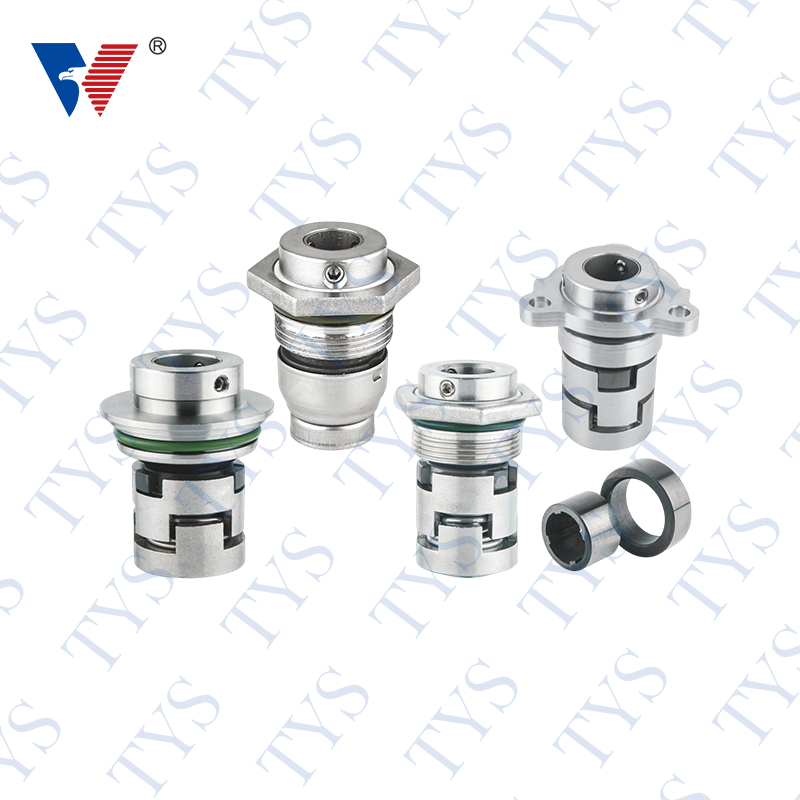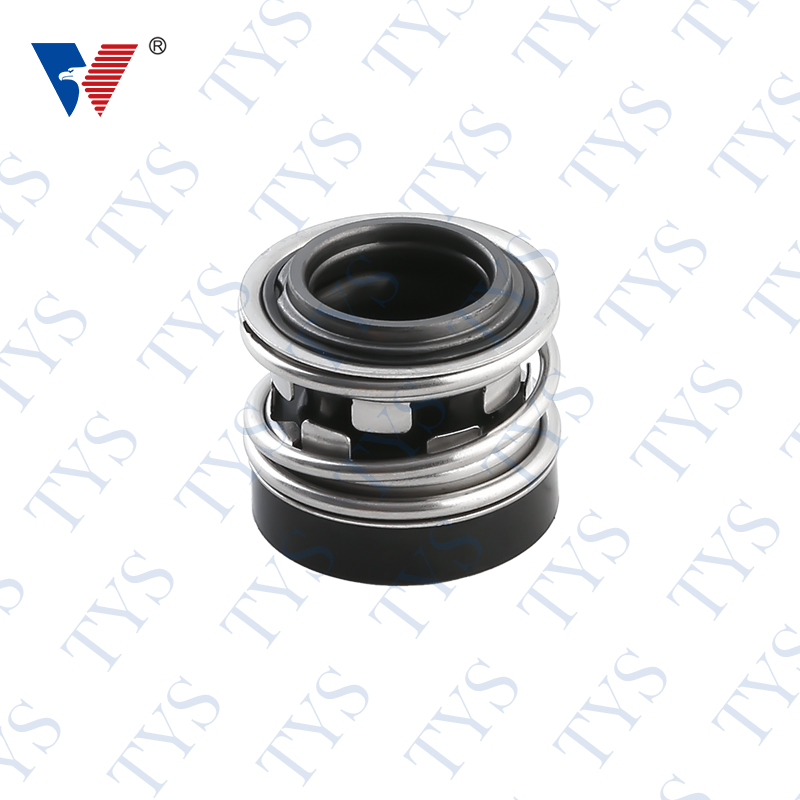How to Design a Vertical Pump Seal
Author:admin Date:2022-12-14
During the design phase of a vertical pump seal, the engineer must consider a variety of factors. This includes the piping plan, pump equipment, and shaft materials. When deciding on the piping plan, it is important to consider the effect of the pump equipment on the seal chamber pressure. This allows for proper operation of the pump, ensuring a longer seal life.
The piping plan must be selected according to the fluid that the seal will be used with. The type of liquid used will affect the pressure that will be applied to the seal chamber. Also, the flush fluid used must be non-polymerizing and moderate temperature. The flush fluid must also be able to remove heat from the seal chamber. If the flush fluid is polymerizing, it may cause clogging of the orifice. This is why a sophisticated lubrication system should be provided.
Choosing the right seal technology will help to increase the reliability of the stuffing box. There are two basic seal technologies available. The first is a cartridge seal, which is a pre-assembled seal that is designed for quick installation. The other is a gland packing, which is a braided rope that physically stuffs the space between the shaft and pump housing. The gland packing is designed to prevent the media from leaking around the shaft.
When selecting the piping plan, it is important to include a drain port in the shaft column. This will prevent leakage of process fluid and unwanted vapors into the atmosphere. The piping plan should also include a bleed bushing, which will help to remove solids from the seal chamber. If the piping plan does not include a bleed bushing, it is important to consider a mechanical seal to keep process fluid from leaking into the atmosphere.
If a seal does not require a bleed bushing, the most common piping plan is Plan 13. This plan uses a high-point vent to prevent leakage of process fluid around the seal faces. This plan also allows for a lower seal chamber pressure. It is recommended for all general duties with a sufficient pressure differential between the suction and discharge. Plan 13 is also recommended for high-head horizontal pumps.
If the seal does not require a bleed bushing, it is also important to consider a mechanical seal to keep unwanted vapors from leaking into the atmosphere. If the seal does require a bleed bushing, it should be installed in conjunction with API Plan 32. This plan will bring clean flush fluid into the seal chamber and will help to maintain the pressure inside the chamber.
The most important consideration for a vertical pump seal is the use of pressurized barrier fluid. This allows for process fluid to be kept from leaking into the atmosphere, preventing excess waste and cost. A liquid barrier fluid system can also be used to prevent process fluid from leaking into the atmosphere. A gas barrier fluid system is also available.

The piping plan must be selected according to the fluid that the seal will be used with. The type of liquid used will affect the pressure that will be applied to the seal chamber. Also, the flush fluid used must be non-polymerizing and moderate temperature. The flush fluid must also be able to remove heat from the seal chamber. If the flush fluid is polymerizing, it may cause clogging of the orifice. This is why a sophisticated lubrication system should be provided.
Choosing the right seal technology will help to increase the reliability of the stuffing box. There are two basic seal technologies available. The first is a cartridge seal, which is a pre-assembled seal that is designed for quick installation. The other is a gland packing, which is a braided rope that physically stuffs the space between the shaft and pump housing. The gland packing is designed to prevent the media from leaking around the shaft.
When selecting the piping plan, it is important to include a drain port in the shaft column. This will prevent leakage of process fluid and unwanted vapors into the atmosphere. The piping plan should also include a bleed bushing, which will help to remove solids from the seal chamber. If the piping plan does not include a bleed bushing, it is important to consider a mechanical seal to keep process fluid from leaking into the atmosphere.
If a seal does not require a bleed bushing, the most common piping plan is Plan 13. This plan uses a high-point vent to prevent leakage of process fluid around the seal faces. This plan also allows for a lower seal chamber pressure. It is recommended for all general duties with a sufficient pressure differential between the suction and discharge. Plan 13 is also recommended for high-head horizontal pumps.
If the seal does not require a bleed bushing, it is also important to consider a mechanical seal to keep unwanted vapors from leaking into the atmosphere. If the seal does require a bleed bushing, it should be installed in conjunction with API Plan 32. This plan will bring clean flush fluid into the seal chamber and will help to maintain the pressure inside the chamber.
The most important consideration for a vertical pump seal is the use of pressurized barrier fluid. This allows for process fluid to be kept from leaking into the atmosphere, preventing excess waste and cost. A liquid barrier fluid system can also be used to prevent process fluid from leaking into the atmosphere. A gas barrier fluid system is also available.

TYS 1007/560/P21 O ring mechanical seal john crane type 1 mechanical seal
|
MODEL |
d1 |
d3 |
D7 |
L |
L1 |
L4 |
L2 |
|
TYS560- 12 |
12 |
26.0 |
26 |
24.0 |
17.5 |
6.5 |
6 |
|
TYS560-14 |
14 |
28.0 |
28 |
25.0 |
18.0 |
7.0 |
6 |
|
TYS560-15 |
15 |
28.0 |
28 |
25.0. |
18.0 |
7.0 |
6 |
|
TYS560-16 |
16 |
30.0 |
32 |
27.0 |
20.0 |
8.0 |
6 |
|
TYS560-18 |
18 |
32.5 |
35 |
27.0 |
19.0 |
8.0 |
6 |
|
TYS560-19 |
19 |
32.5 |
35 |
27.0 |
18.0 |
8.0 |
6 |
|
TYS560-20 |
20 |
35.5 |
38 |
28.0 |
19.5 |
8.0 |
6 |
|
TYS560-22 |
22 |
37.5 |
40 |
28.0 |
20.0 |
8.0 |
6 |
|
TYS560-25 |
25 |
42.0 |
44 |
29.0 |
20.0 |
9.0 |
7 |
|
TYS560-28 |
28 |
45.5 |
46 |
30.0 |
21.0 |
9.0 |
7 |
|
TYS560-30 |
30 |
48.0 |
50 |
31.0 |
22.0 |
9.0 |
7 |
|
TYS560-32 |
32 |
50.0 |
54 |
33.0 |
24.0 |
9.0 |
7 |
|
TYS560-35 |
35 |
54.5 |
58 |
36.0 |
26.0 |
10 |
8 |
|
TYS560-38 |
38 |
58.5 |
60 |
37.0 |
27.0 |
10 |
8 |
|
TYS560-40 |
40 |
62.5 |
64 |
38.0 |
28.0 |
10 |
8 |
|
TYS560-45 |
45 |
66.5 |
66 |
40.0 |
30.0 |
10 |
8 |
|
TYS560-50 |
50 |
72.5 |
72 |
42.0 |
32.0 |
10 |
8 |



 English
English 中文简体
中文简体








.png)







